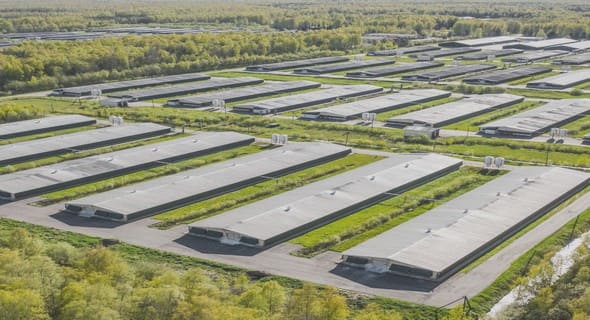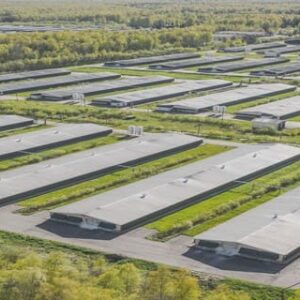(Downloads - 0)
For more info about our services contact : help@bestpfe.com
Table of contents
CHAPTER 1 – General Introduction, issues and framework
1. Introduction
2. Brazilian and French poultry industries: globalization approach
2.1. Legal, social and environmental aspects
3. Research questions and objectives
3.1. Research questions
3.2. Aim and objectives
3.2.1. Aim
3.2.2. Objectives
4. Scenarios of poultry production
4.1. Brazilian poultry scenario
4.2. French poultry scenario
4.3. Supply chain of chicken production in Brazil
4.3.1. The vertically integrated system model
4.3.2. The links of the chain
4.4. Supply chain of chicken production in France
4.5. Research sites
4.6. Some characteristics of the sites studied
4.6.1. France – Standard industrial chicken (ST)
4.6.2. France – Label Rouge (LR)
4.6.3. Brazil – Standard industrial chicken (CW)
4.6.4. Brazil – Standard industrial chicken – family (SO)
5.1. Goal and scope
5.2. Life cycle inventory
5.3. Life cycle impact assessment
5.4. Interpretation
5.5. Limitations
6. Structure of the thesis
7. References
CHAPTER 2 – Estimating forest conversion to soybean land in Brazil and the associated life cycle impacts
1. Introduction
2. Materials and methods
2.1. Estimation of land transformation
2.2. Observation of deforestation and cropland expansion
2.3. A new proposition
2.3.1. Land transformation from rainforest
2.3.2. Land transformation from Cerrado
2.4. Assessing impacts of land transformation for different scenarios
3. Results and discussion
3.1. Implementation of values for land transformation
4. Conclusions
5. Acknowledgements
6. References
CHAPTER 3 – Variability in environmental impacts of Brazilian soybean according to crop production and transport scenarios
1. Introduction
2. Material and methods
2.1. Assessment methodology
2.2. Modeling
2.2.1. Production stage
2.2.2. Drying and storage
2.2.3. Transportation routes
2.3. Emissions from crop production
2.4. Land use
2.5. Characterization factors
3. Results
3.1. Impacts of soybean crop production
3.2. Impacts of soybeans delivered at Rotterdam
3.3. Contribution of life cycle stages and substances to impacts of soybean exportation
3.3.1. Climate change and Cumulative energy demand
3.3.2. Acidification and Eutrophication
3.3.3. Terrestrial toxicity and Land occupation
4. Discussion
4.1. Comparison with previous studies
4.2. Hot spots and recommendations
4.2.1. Environmental hot spots and recommendations
4.2.2. Methodological hot spots and recommendations
5. Conclusions
6. Acknowledgements
7. References
8. Annex
CHAPTER 4 – Intensity and scale effects for environmental impacts of French and Brazilian poultry production scenarios: an LCA approach
1. Introduction
2. Material and Methods
2.1. Scope of analysis
2.2. Technical indicators
2.3. Crop production stage emissions
2.3.1. Nitrate leaching
2.3.2. Ammonia emissions
2.3.3. N2O emissions
2.3.4. Phosphorus emissions
2.3.5. Heavy metals emissions
2.4. Poultry production stage emissions
2.5. Slaughterhouse stage
2.6. Characterization factors
2.6.1. Functional Units (FU)
3. Results
3.1. Impacts of live chicken production
3.2. Impacts of processed chicken production
3.3. Contributions of life cycle stages and substances
3.3.1. Climate change and cumulative energy demand
3.3.2. Acidification and eutrophication
3.3.3. Terrestrial ecotoxicity and land competition
3.4. Economic functional unit approach
4. Discussion
4.1. Comparison with previous studies
4.2. Scale effect
4.3. Intensity effect
4.4. Economic functional Unit
4.5. Hot spots and recommendations
5. Conclusions
6. Acknowledgements
7. References
8. Annex
CHAPTER 5 – General discussion and conclusion
1. Intensity effects
2. Scale effects
3. Origin of the chicken consumed in France
4. Hotspots and opportunities
4.1. Western France – standard system (ST)
4.2. South-West of France « Label Rouge » (LR)
4.3. Centre-West of Brazil (CW)
4.4. South of Brazil (SO)
4.5. Overall issues
4.5.1. Improving feed production
4.5.2. Improving chicken rearing
4.5.3. Improving slaughter stage
5. Changing the approach
6. Conclusion
7. References




